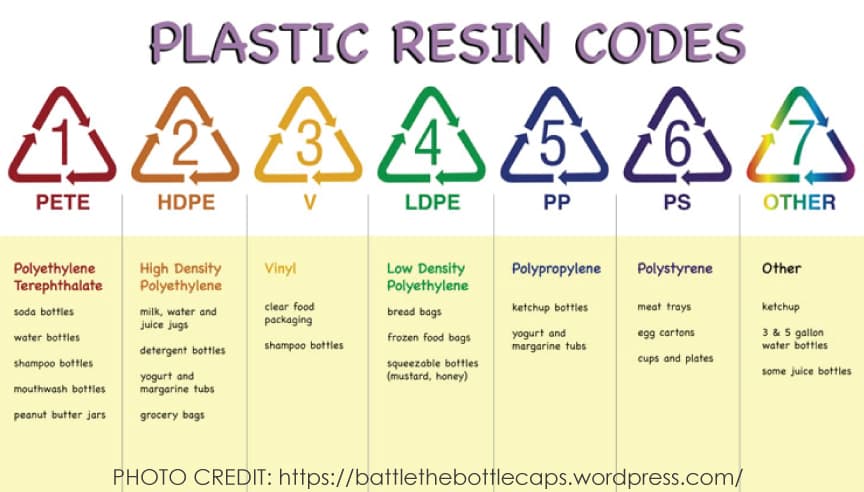There is a definite resurgence of interest in making one’s own personal care products or purchasing from a trusted source rather than the commercial brands and big box stores. With all the good intentions, sometimes wonderful personal care products end up being stored in ill-fated packaging.
Not only is packaging important when we make personal care products for our family but also for those thing we do buy. This blog is a brief foray into the world of plastics and where you need to be careful. Plastic containers all have a “recycle code” which is very helpful in identifying what we should use and what we should avoid.
This chart should prove helpful to you in learning to recognize what is considered safe and what is not.
Plastic products are marked with a number within a triangle that corresponds to the type of plastic it is made of. The plastic you will want to avoid are #3, #6 and #7. These three types of plastic are believed to release substances into the container ingredients.
#3 Polyvinyl Chloride (PVC): Contains di-2-ehtylhexl phthalate (DEHP). This is an endocrine disrupter and a suspected carcinogen (cancer causing).
#6 Polystyrene (PS): Suspected of leaching styrene into food, drink or personal care products. It is another suspected carcinogen and possible hormone distruptor.
#7 Polycarbonate: Also known as bisphenol-A (BPA) – This type of plastic contains a chemical that can leach out when it is heated or exposed to acidic fluids. It is very common in sports bottles and found in baby bottles and 5 – gallon water jugs. BPA is one of the world’s largest production chemicals.
The additional problem with BPA is that is it also found in aluminum and metal bottles within the liners, especially aluminum bottles. The best bottles for storing liquids (and especially essential oils and fragrances) are stainless steel which have wonderful corrosion resistance without having a liner.
Keep your eyes open when you purchase plastics containers whether empty or full and check the above numbers. If you see these three, avoid the purchase.


